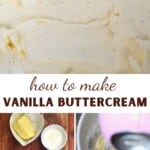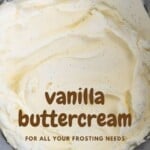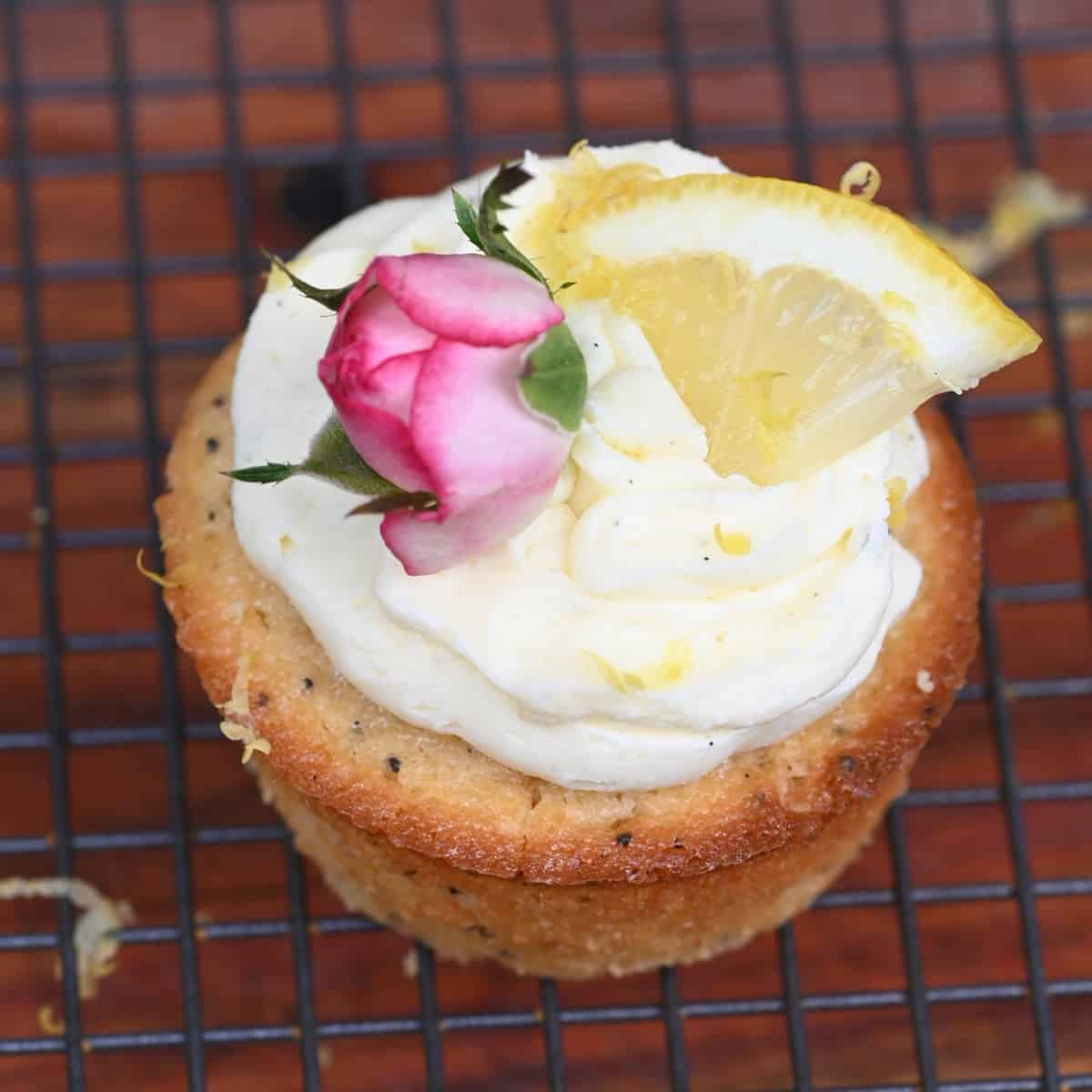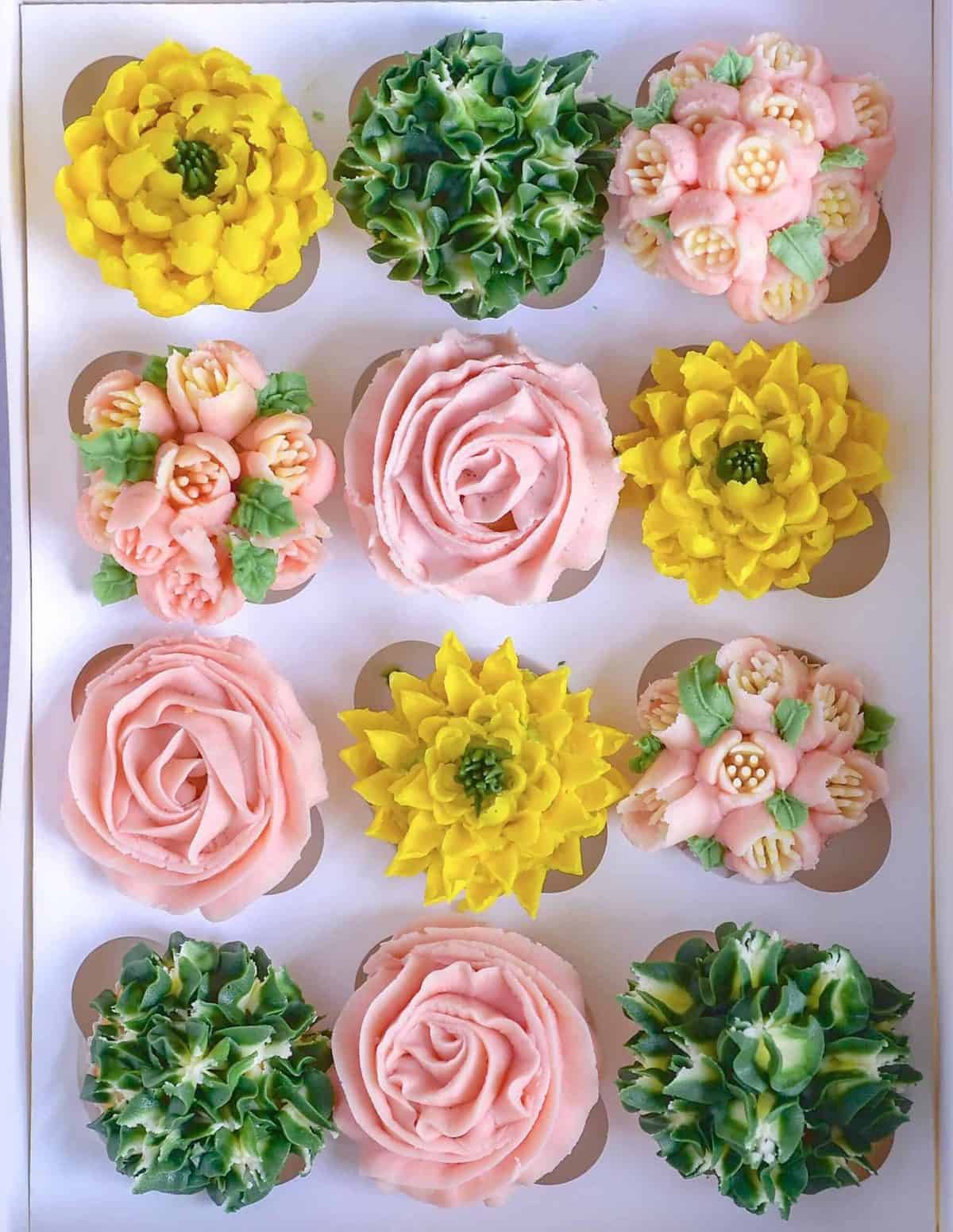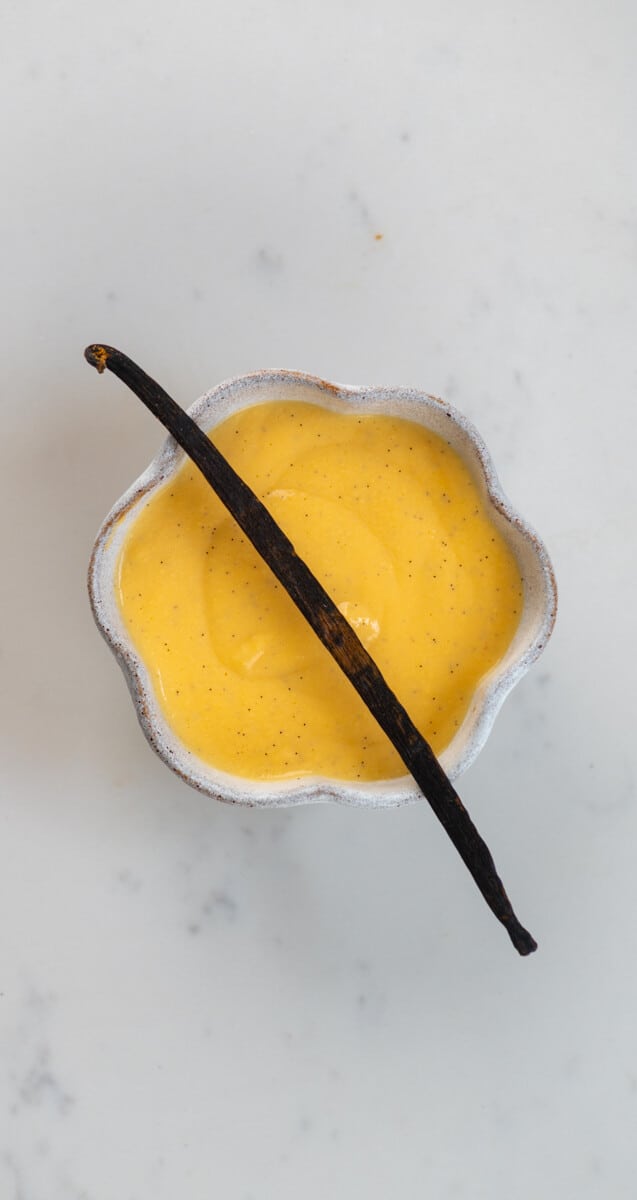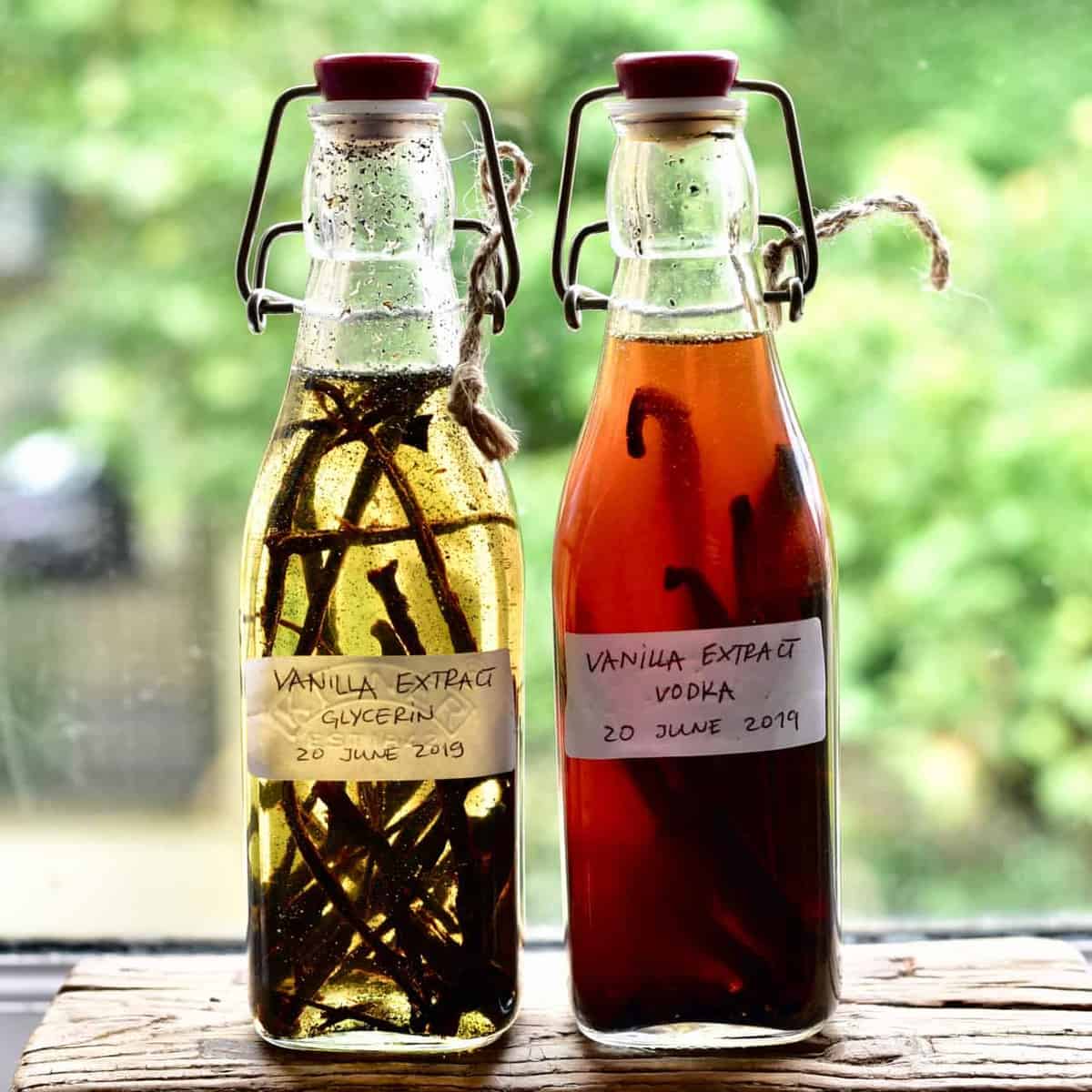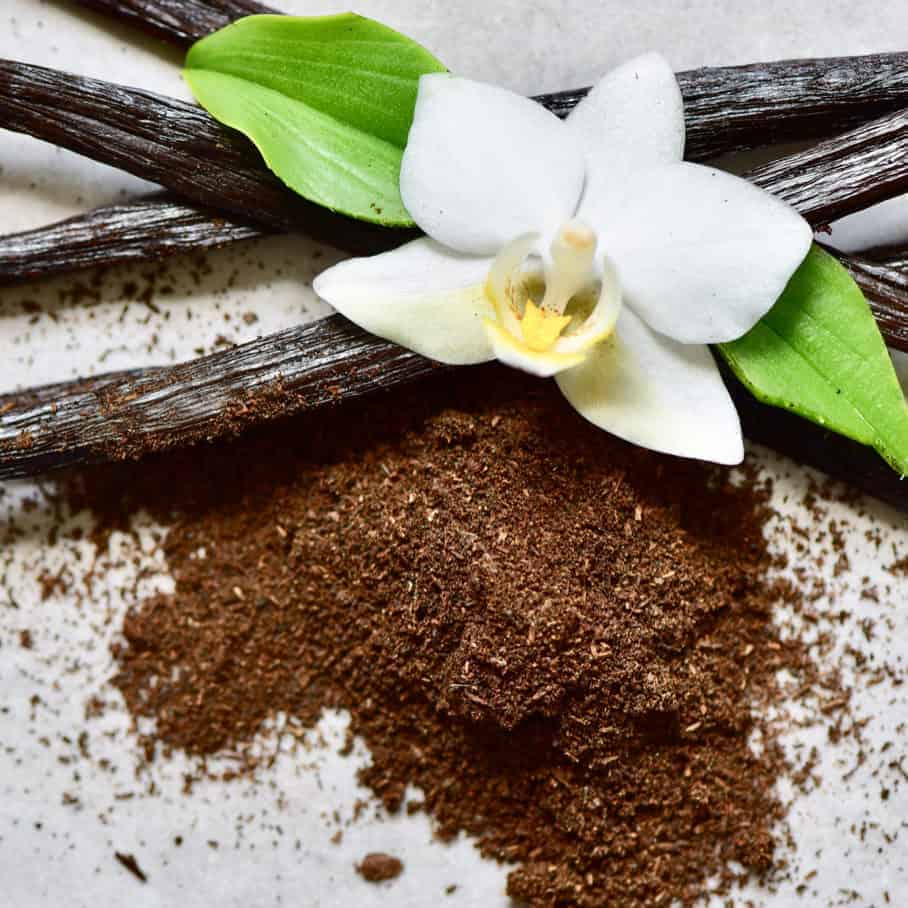This post may contain affiliate links. Please read our disclosure policy.
How to make perfectly fluffy, whipped vanilla buttercream frosting at home every single time! All you need is 3 base ingredients and either a stand mixer or handheld mixer!
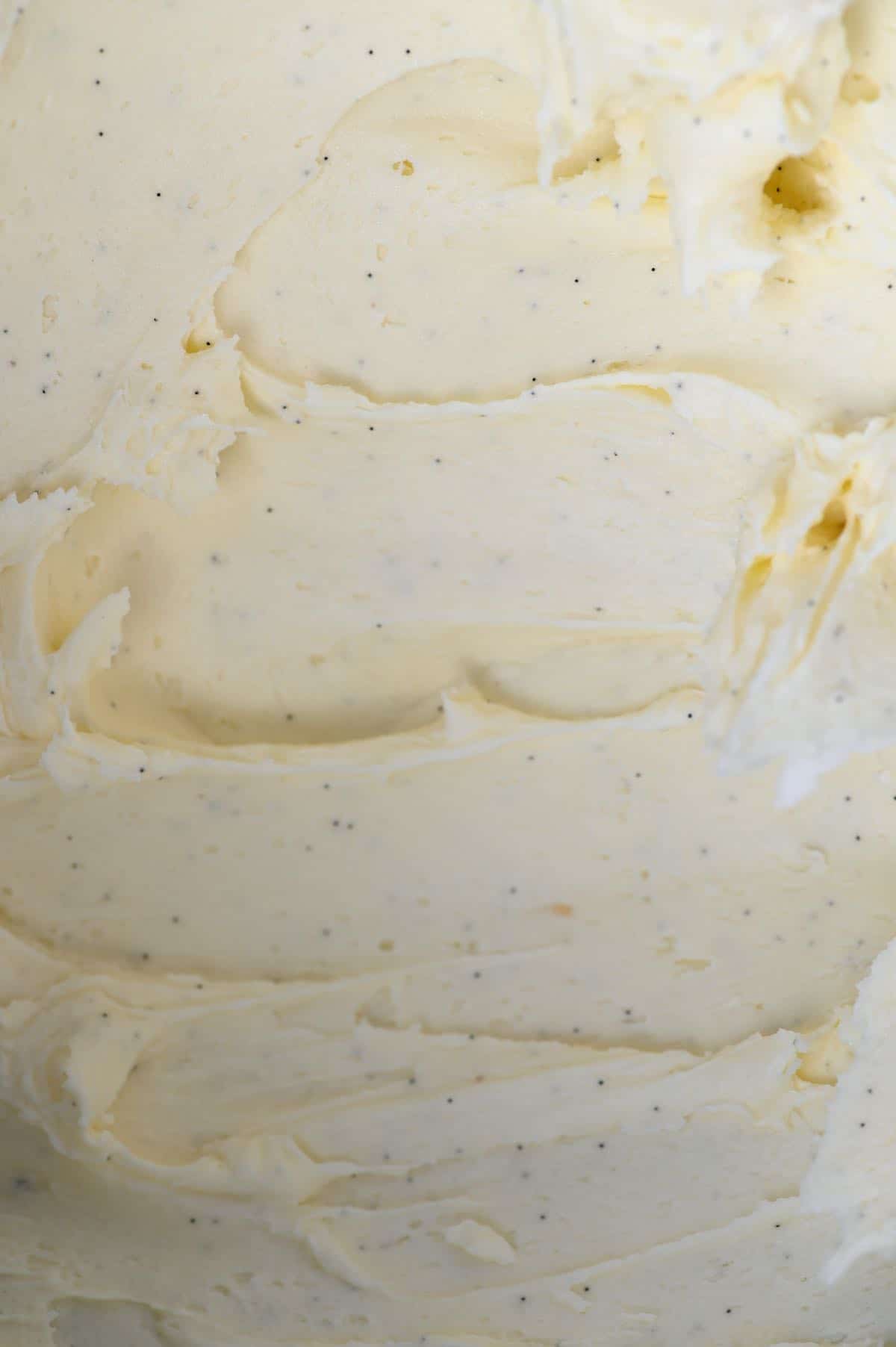
If there are certain basics that anyone interested in baking should get to grips with, then vanilla buttercream frosting is one of those. In fact, this easy buttercream frosting is perfect for adapting to all kinds of flavors, but vanilla is the classic choice, of course.
There’s also no need for a stand mixer with this easy vanilla frosting. If you have one, then great, but if not, then feel free to use an electric or manual whisk – it is great for all the amateur home bakers since a stand mixer can definitely be on the pricey side.
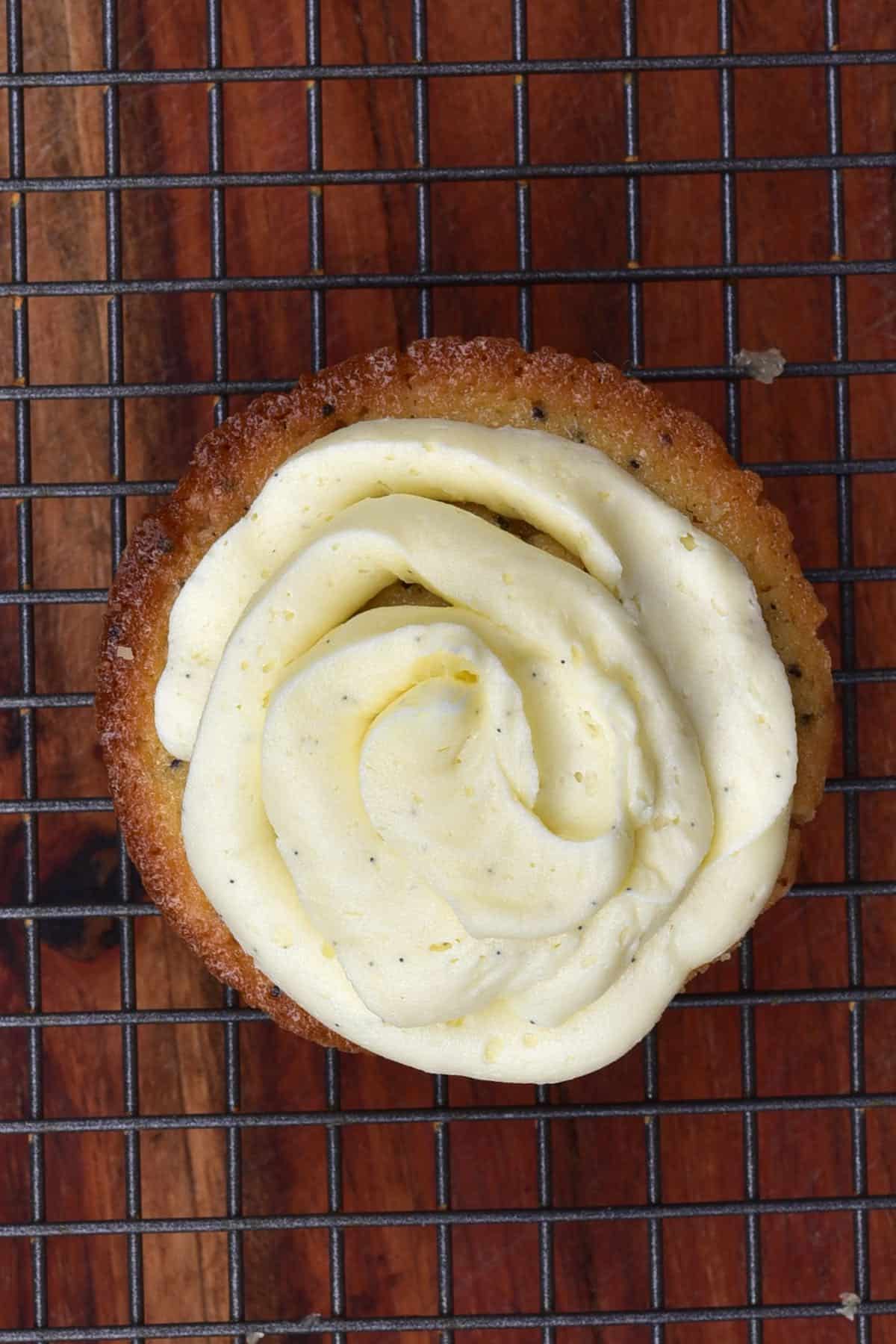
Unlike pre-prepared tubs of frosting, this homemade vanilla buttercream doesn’t contain any unnecessary additives. It is also made with cheap ingredients, an easy process, and is quick and easy to whip up in under ten minutes.
Once whipped, you can use your homemade buttercream icing immediately on all sorts of baked goods like lemon cupcakes, Floral cupcakes, and various other cakes and bakes. Alternatively, store it in the fridge for later use.
Best of all, this recipe makes for a great ‘base’ – perfect for adapting to different colors and flavors with just a simple swap of a single ingredient!
Want to save this recipe?
The Ingredients
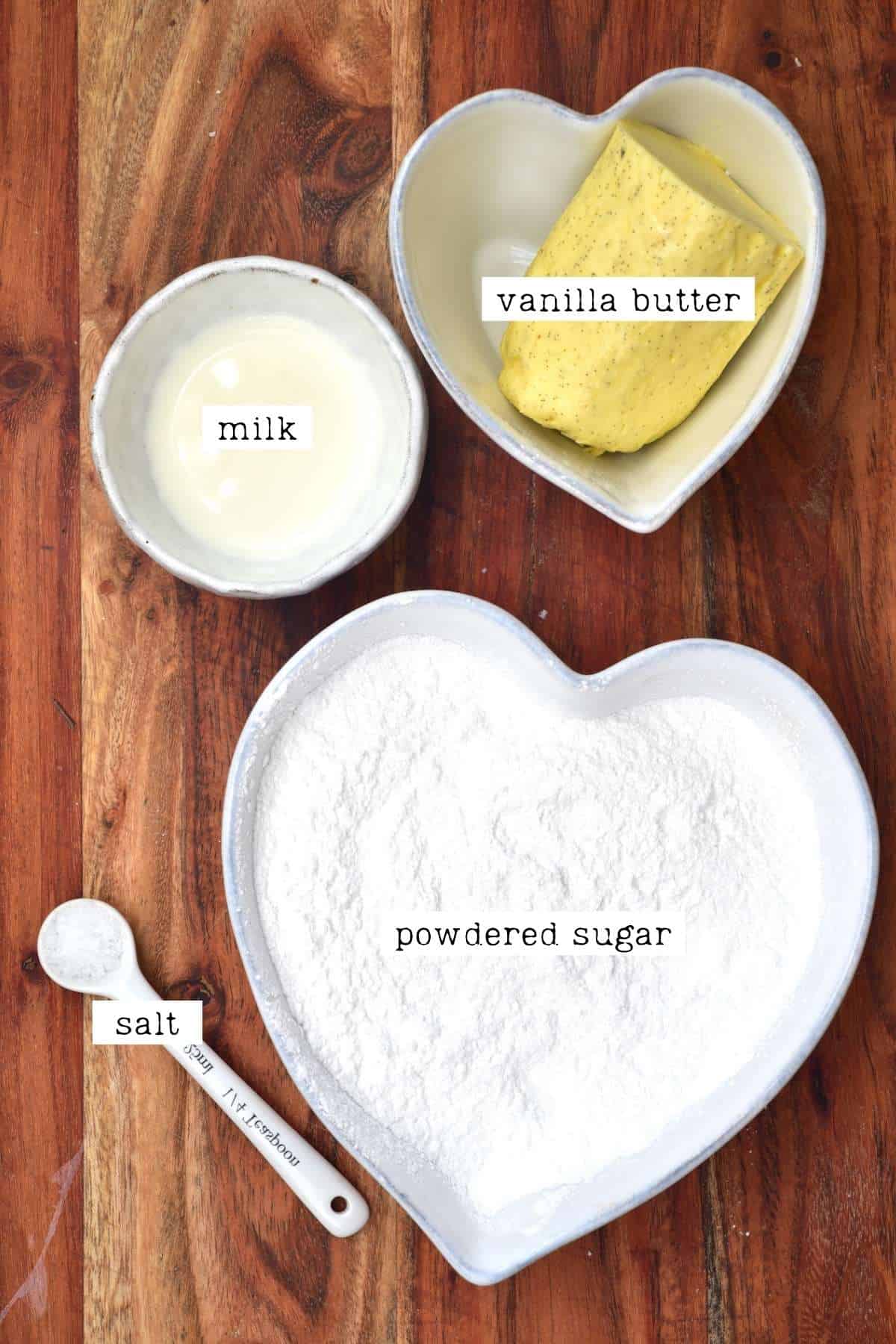
- Butter: make sure to use room temperature butter – this will ensure light and fluffy buttercream frosting. You can use salted or unsalted butter. I usually use homemade butter or vanilla butter.
- Powdered sugar: also called confectioners sugar or icing sugar. If you want to use a different sugar variety (i.e., coconut sugar), then make sure to powder it first (you can do this at home!).
- Vanilla: I use vanilla extract if I don’t already have vanilla butter. Make sure to use clear extract if you don’t want the icing color to be impacted. You can easily adapt this buttercream frosting with the extract of your choice, though (lemon, mint, strawberry, coffee, etc.).
- Milk: technically optional, but I love to add a little whole milk (or heavy cream) for extra creamy flavor and light consistency.
- Salt: I’m obsessed with all things salty and sweet (hello salted caramel sauce!), so I love to add a little salt to balance with the sweetness of the powdered sugar. You could also use salted butter, but it’s harder to control how salty the buttercream is then as different brands vary.
How To Make Vanilla Buttercream Frosting
First, measure out all of the ingredients making sure to allow the butter to soften to room temperature (or even make this from scratch, if you’d like).
Add the softened butter to a large mixing bowl or a stand mixer and whip on high for 1 minute until creamy.
Then add half the sugar, the vanilla (or extract of your choice), and whisk until smooth and creamy – this will take around 3-5 minutes on medium-low speed. You can start on low to avoid the icing sugar being thrown about the room and once it’s incorporated, bump the speed up slightly.
I usually add the milk at this point, too, as I use milk almost every time. However, if you’re not sure you want to or want to adapt how much you use, then you can add it right at the end of the process instead – adding 1 tsp at a time until you reach your desired consistency.
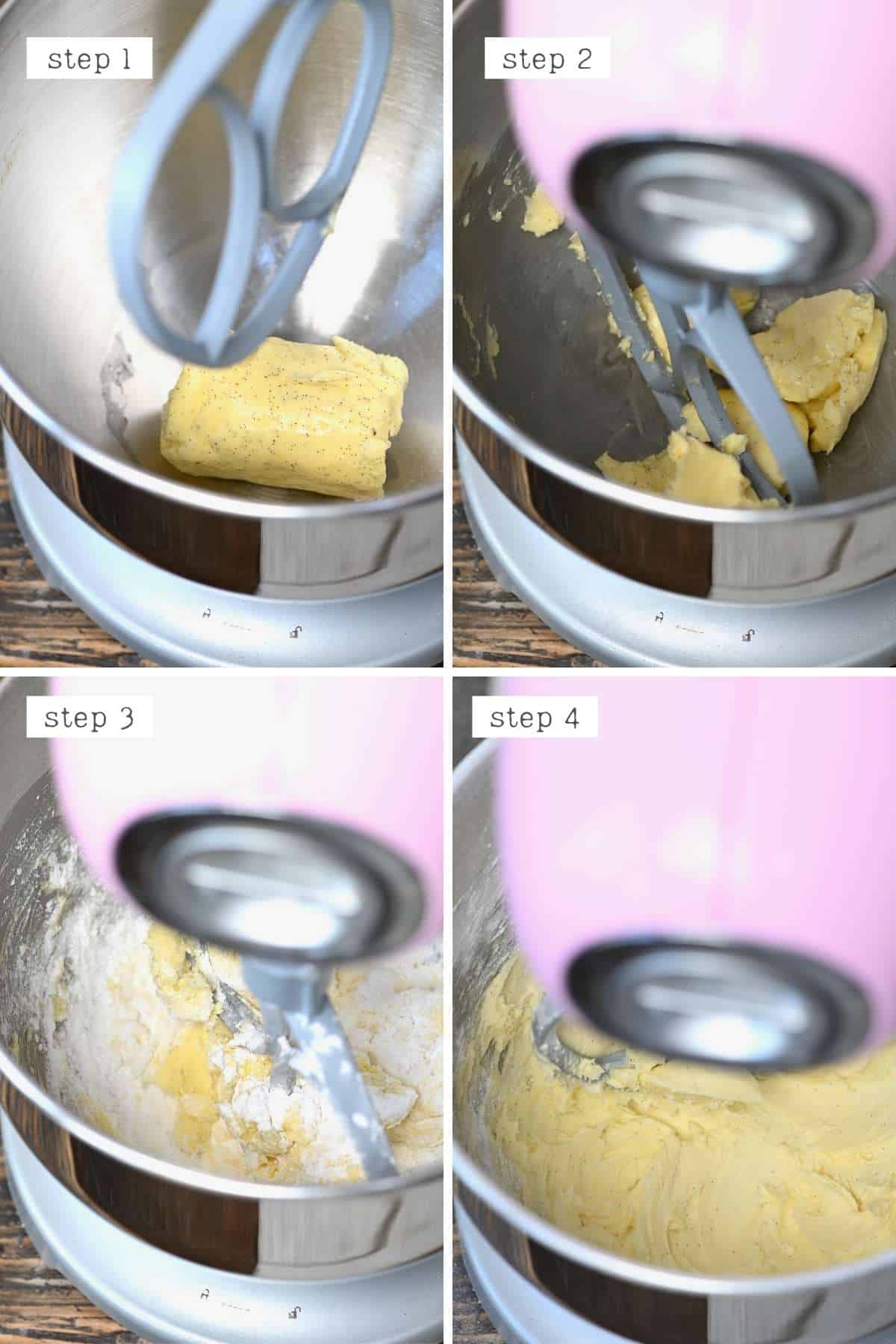
To avoid the icing dust going everywhere (including in your lungs!), then it’s also a good idea to use a guard or tea towel over the bowl to trap it in the bowl.
Gradually add the remaining sugar, whisking throughout. The aim is for a thick and spreadable frosting – this can take several minutes. Once incorporated, you can put the speed up to high to whip in more air to the buttercream.
Taste the frosting to make sure the consistency and flavor are right. If not, then tweak as needed – more milk, more sugar, more extract, etc.
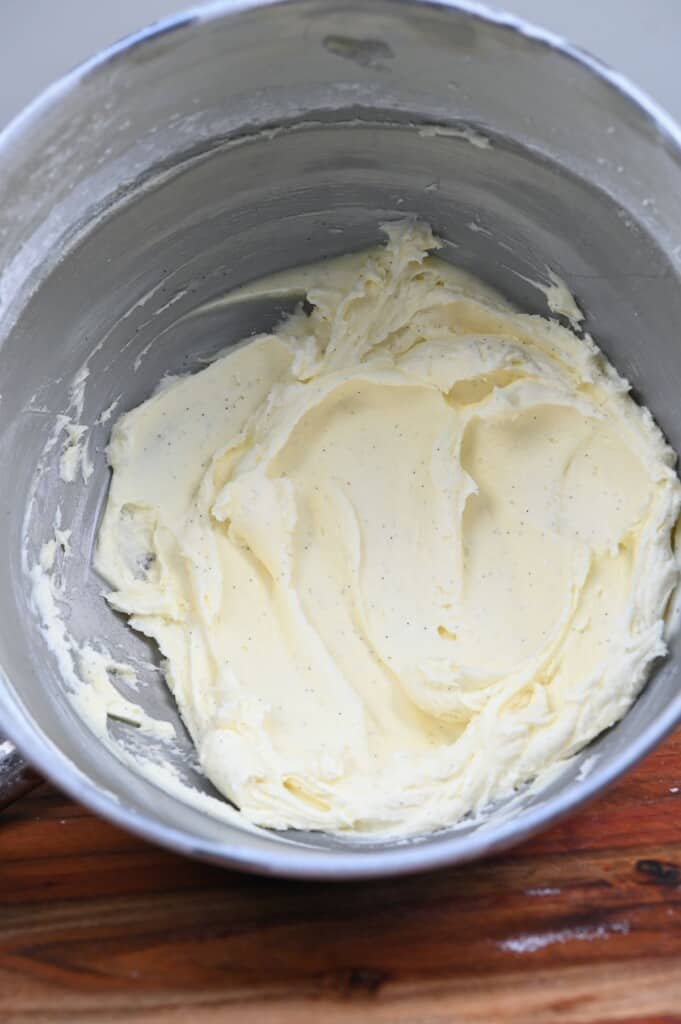
How To Store Vanilla Buttercream Frosting
Fridge & freezer: you can store prepared vanilla buttercream in the refrigerator for up to 5 days or in the freezer for up to 3 months.
To use from chilled/frozen: allow the frosting to come back to room temperature and then mix for several minutes until light and fluffy again.
FAQs
It’s all in the title – buttercream is definitely best when prepared with butter. However, in a pinch, you could use full-fat margarine.
I’d avoid low-fat margarine, though, as it tends to be more watery and won’t reach the desired consistency.
There are a couple of ways you can thicken buttercream. The first is to simply add more powdered sugar until you reach the desired consistency. If it becomes too sweet, then add a pinch of salt to balance the flavor.
If you want to use the buttercream for piped decorations, you can thicken it up by replacing half of the butter with shortening (or vegetable shortening).
In typical American buttercream, the ratio used is 2:1 powdered sugar to butter (in weight).
For this recipe, I used 1/2 cup butter (around 115g) and 2 cups powdered sugar (around 250g) – adding a little extra because I also mix in milk.
This easy buttercream frosting recipe prepares enough to cover 12 cupcakes when swirling, more if you apply it with a knife. Or top an 8-inch cake in a thin layer of frosting.
I recommend doubling the recipe if you want to frost a two-layer 8-inch cake or for a sheet cake that’s around 9×13-inches.
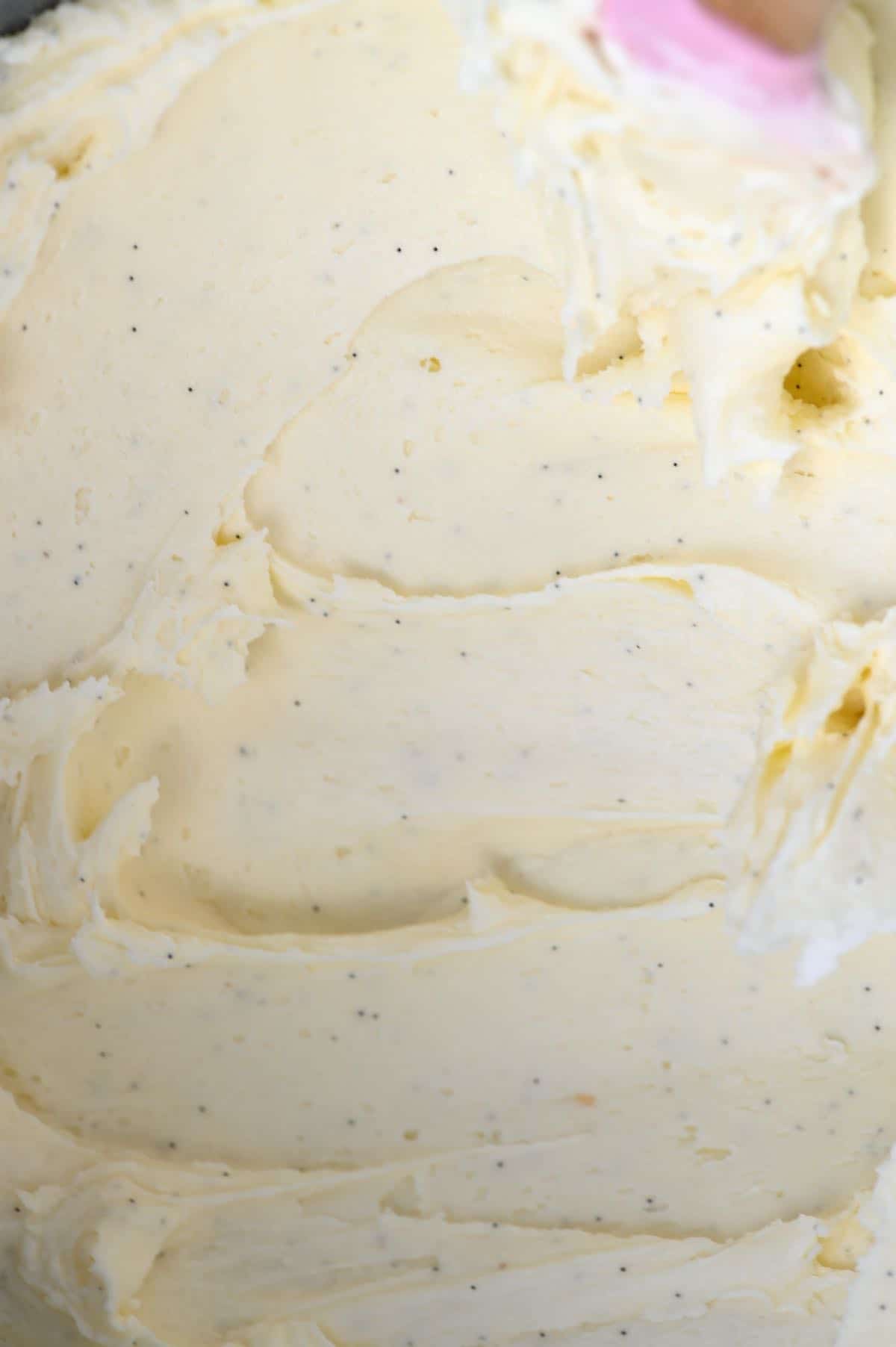
Recipe Notes & Top Tips
- To adapt the flavor of this vanilla buttercream, it’s as simple as substituting the vanilla extract for the extract of your choice and, optionally, adding natural food coloring to match.
- Make sure to sift the icing sugar to avoid lumps in the frosting.
- Why add milk to buttercream frosting? This will help to yield a lighter texture. I suggest adding a teaspoon at a time until you reach your desired consistency. If you add too much, then simply add a little extra icing sugar.
- Classic American buttercream tends to use a ratio of 2:1 powdered sugar to butter. However, as I add milk – I use slightly more powdered sugar to make up for it.
- Once piped, feel free to leave your cakes at room temperature for several hours or overnight (any longer, and they should be stored in the refrigerator). However, if you live in a hot climate, I recommend storing them in the refrigerator and removing them an hour before serving so they come back down to room temperature.
- If you use margarine instead of butter, then you may not need to add any milk – or else the frosting could end up too runny.
Related Recipes & DIYs
- The Ultimate Homemade Vanilla Custard
- Two Ingredient simple DIY Vanilla Extract
- DIY: How to make Vanilla Powder
- How To Make White Chocolate
- Simple Chocolate Pastry Cream (Creme Patissiere)
- How To Make Homemade Caramel Sauce (+ Tips and Flavor Options)
- Healthy Vegan Caramel Sauce (& Sugar-Free Date Caramel)
If you try this Vanilla Buttercream recipe, then let me know your thoughts and questions in the comments. I’d also really appreciate a recipe rating and would love to see your recreations – just tag @AlphaFoodie.
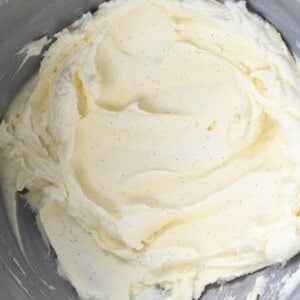
Easy Vanilla Buttercream Frosting
Ingredients
- 1/2 cup vanilla butter at room temperature, or use 1/2 cup unsalted butter + 1 tsp vanilla extract
- 2 cups powdered sugar
- 1/8 tsp salt
- 2-3 Tbsp milk optional (or heavy cream)
Instructions
- Measure out all of the ingredients making sure to allow the butter to soften to room temperature (or even make this from scratch, if you'd like).
- Add the softened butter to a large mixing bowl or a stand mixer and whip on high for 1 minute until creamy.To make it super creamy and light you can actually allow this to whip for up to 4 minutes – give it a try both ways and see which you prefer.
- Add half the sugar, the vanilla (or extract of your choice) and whisk until smooth and creamy – this will take around 3-5 minutes on medium-low speed. You can start on low to avoid then icing sugar being thrown about the room and once they're incorporated bump the speed up slightly.I usually add the milk at this point, too, as I use milk almost every time. However, if you're not sure you want to or want to adapt how much you use, then you can add it right at the end of the process instead- adding 1tsp at a time until you reach your desired consistency.To avoid the icing dust going everywhere (including in your lungs!), then it's also a good idea to use a guard or tea towel over the bowl to trap it in.
- Gradually add the remaining sugar, whisking throughout. The aim is for a thick and spreadable frosting – this can take several minutes. Once incorporated, you can put the speed up to high to whip in more air to the buttercream.
- Taste the frosting to make sure the consistency and flavor are right. If not, then tweak as needed: more milk, more sugar, more extract, etc.
How To Store
- Fridge & freezer: you can store prepared vanilla buttercream in the refrigerator for up to 5 days or in the freezer for up to 3 months.To use from chilled/frozen: allow the frosting to come back to room temperature and then mix for several minutes until light and fluffy again.
Notes
- To adapt the flavor of this vanilla buttercream, it’s as simple as substituting the vanilla extract for the extract of your choice and, optionally, adding natural food coloring to match.
- Make sure to sift the icing sugar to avoid lumps in the frosting.
- Why add milk to buttercream frosting? This will help to yield a lighter texture. I suggest adding a teaspoon at a time until you reach your desired consistency. If you add too much, then simply add a little extra icing sugar.
- Classic American buttercream tends to use a ratio of 2:1 powdered sugar to butter. However, as I add milk – I use slightly more powdered sugar to make up for it.
- Once piped, feel free to leave your cakes at room temperature for several hours or overnight (any longer, and they should be stored in the refrigerator). However, if you live in a hot climate, I recommend storing them in the refrigerator and removing them an hour before serving so they come back down to room temperature.
- If you use margarine instead of butter, then you may not need to add any milk or else the frosting could end up too runny.
Nutrition
Nutrition information is automatically calculated, so should only be used as an approximation.

